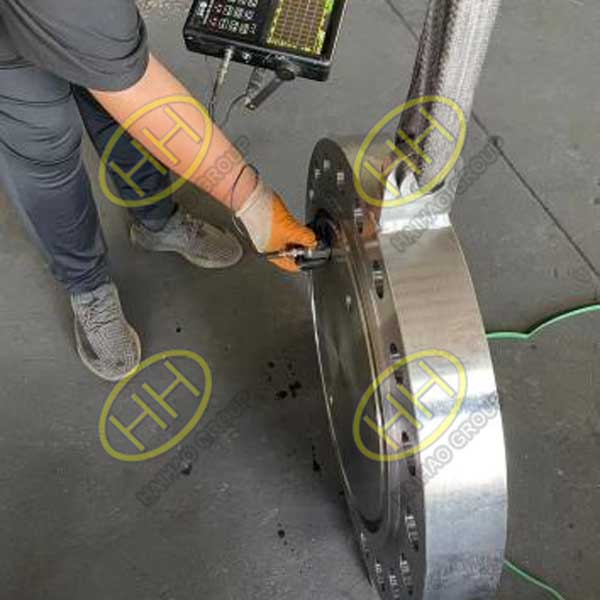Comparative analysis of four non-destructive testing methods for flanged pipelines
Non-destructive testing (NDT) refers to a collection of techniques that assess the integrity of materials or components without causing damage to them. These methods provide information about the presence of defects, their size, location, nature, and quantity, aiding in determining the technical status of the inspected objects. Among the commonly used NDT methods are ultrasonic testing (UT), magnetic particle testing (MT), penetrant testing (PT), and X-ray testing (RT).
Ultrasonic Testing (UT)
UT utilizes high-frequency sound waves to inspect the internal structure of metallic components for defects. By emitting ultrasound waves into the material through a couplant, variations in the reflected signals (echoes) provide insights into internal flaws. UT is particularly sensitive to cracks, lack of fusion, and incomplete penetration defects. Its advantages include versatility across various materials, accurate defect localization, and high sensitivity. However, UT may struggle with surface defects and requires skilled interpretation.
Magnetic Particle Testing (MT)
MT relies on the magnetic properties of ferromagnetic materials. When magnetized, these materials exhibit magnetic flux leakage around discontinuities, which is visualized by applying magnetic particles on the surface. MT is suitable for detecting surface and near-surface defects such as cracks, laps, folds, and porosity in ferromagnetic materials. However, it cannot be used on non-ferrous materials or austenitic stainless steel, and its sensitivity depends on defect orientation and shape.
Penetrant Testing (PT)
PT involves applying a liquid penetrant to the surface of a component, allowing it to seep into surface-breaking defects. After excess penetrant is removed, a developer is applied, causing trapped penetrant to seep out and form visible indications. PT is versatile, cost-effective, and sensitive to surface defects in various materials. However, it cannot detect subsurface or internal defects and is highly dependent on operator skill.
X-ray Testing (RT)
RT utilizes X-rays to penetrate materials, with different absorption rates revealing internal defects. The resulting radiographic images enable the visualization of volumetric defects but lack depth localization. RT is sensitive to volumetric flaws, offers visual defect representation, and maintains a permanent record with traceability. However, it involves radiation exposure, requires specialized processing for films, and has limited thickness capabilities.
In summary, each NDT method has its advantages and limitations. UT and RT are suitable for internal defect detection, with UT preferred for larger components and RT offering volumetric insights. MT and PT excel at surface defect detection, with MT applicable to ferromagnetic materials and PT offering versatility but limited depth assessment. By understanding these differences, industries can select the most appropriate NDT method based on their specific inspection requirements.


